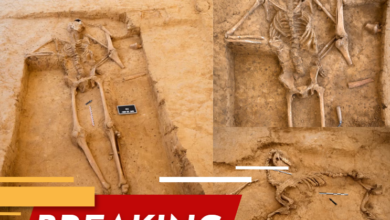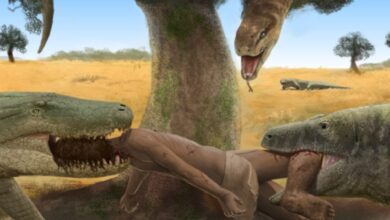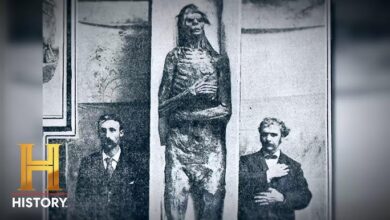Scientists Raise Alarm As Divers JUST Discover Skeleton Believed to Belong to Legendary Necro Whale!

Strangest Discoveries Made by Deep Sea Divers:
—
### **1. Missing Person Case Solved**
Ethan Kazmerzak went missing in 2013 in Hampton, Iowa. In October 2020, his 2006 Volkswagen Jetta was found submerged in a nearby lake, with Kazmerzak’s remains inside. The discovery ended a seven-year mystery. Police have not yet determined how the car ended up in the water or whether a crime was involved.
—
### **2. USS Grayback Submarine Found After 75 Years**
The USS Grayback submarine sank in 1944 after being attacked by the Japanese military. During a project to recover missing submarines, a team discovered it 1,400 feet below the surface off the coast of Okinawa, Japan. A mistake in the US Navy’s translation of coordinates has caused its location to be off by more than 100 miles for decades.
—
**3. WWII Corsair Wreck**

The Corsair fighter plane crashed into the sea off the coast of Oahu, Hawaii in 1945 due to lack of fuel. It now lies 110 feet deep, in excellent condition. The plane, which once belonged to the US Navy and Marine Corps, is notable for its distinctive curved wings.
—
**4. Sunken Roman City of Baiae**
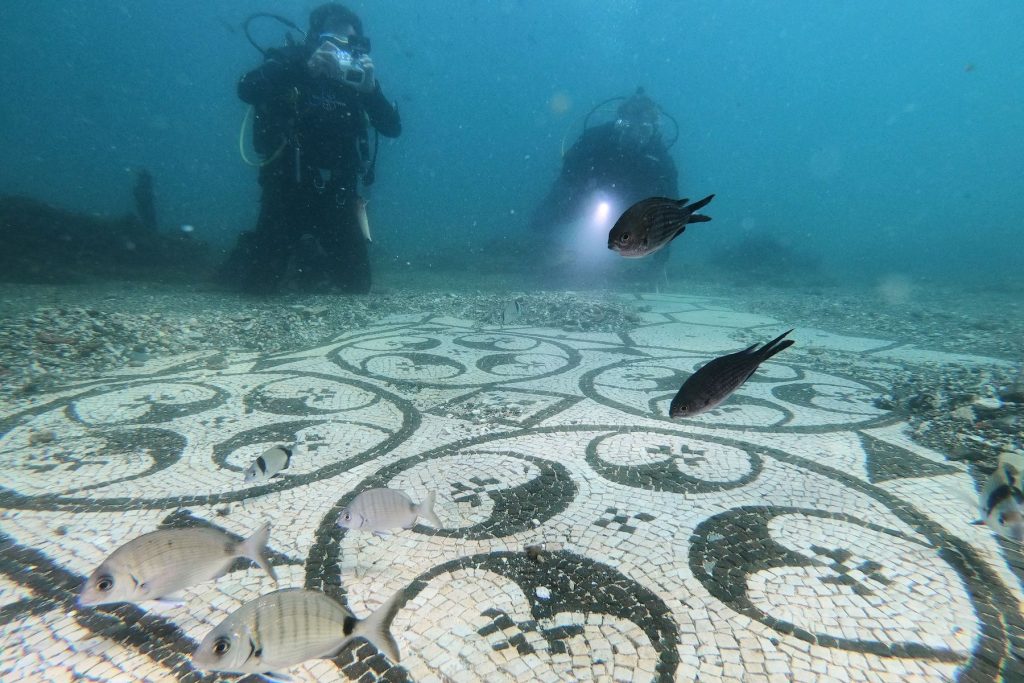
Baiae, a popular resort during Roman times, was submerged under the sea due to volcanic activity and earthquakes. The underground archaeological site now houses many magnificent structures, reflecting the lavish lifestyle of the ancient Roman aristocracy.
—
**5. USS Oriskany**

The USS Oriskany, which served in World War II and the Vietnam War, was sunk in 2006 in the Gulf of Mexico to create an artificial reef. It is one of the largest wrecks ever used for this purpose and is now attracting many divers to explore.
—
**6. Mysterious skeleton near the Mariana Trench**
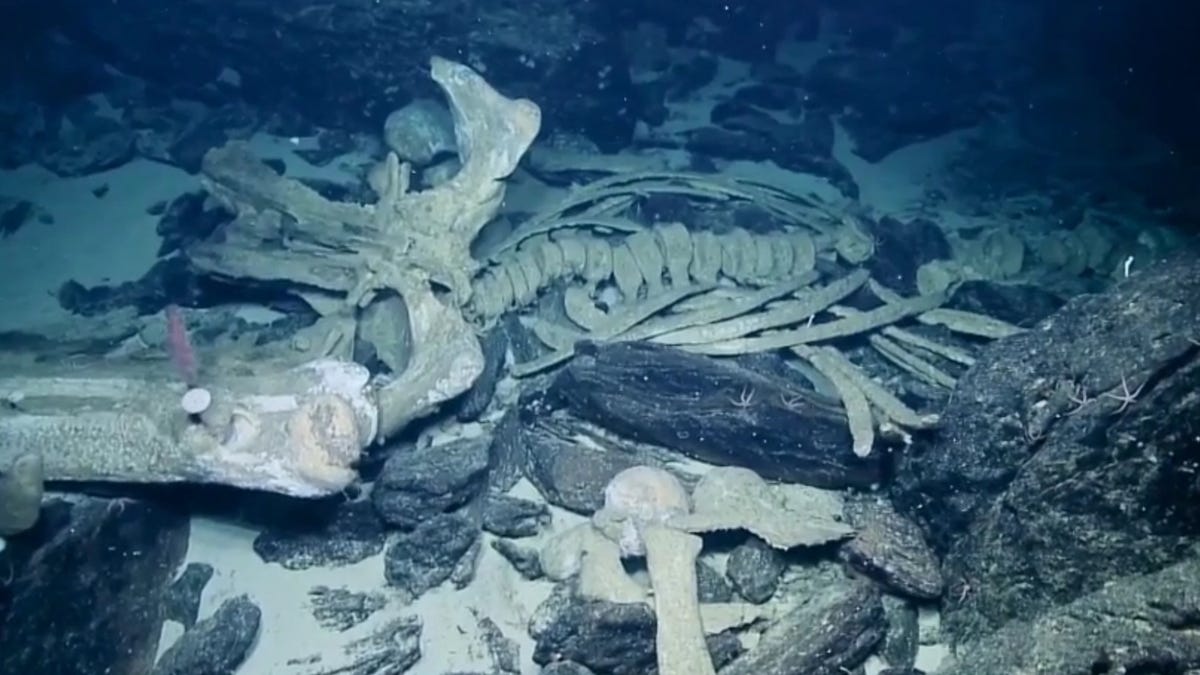
Near the Mariana Trench, divers discovered a large skeleton with an unusual structure. Some theories suggest that this is an unknown sea creature, or it could be evidence of a “necrohal” – a legendary creature under the ocean. This discovery is still controversial in the scientific community.
—
**7. Rare sea angel discovered**
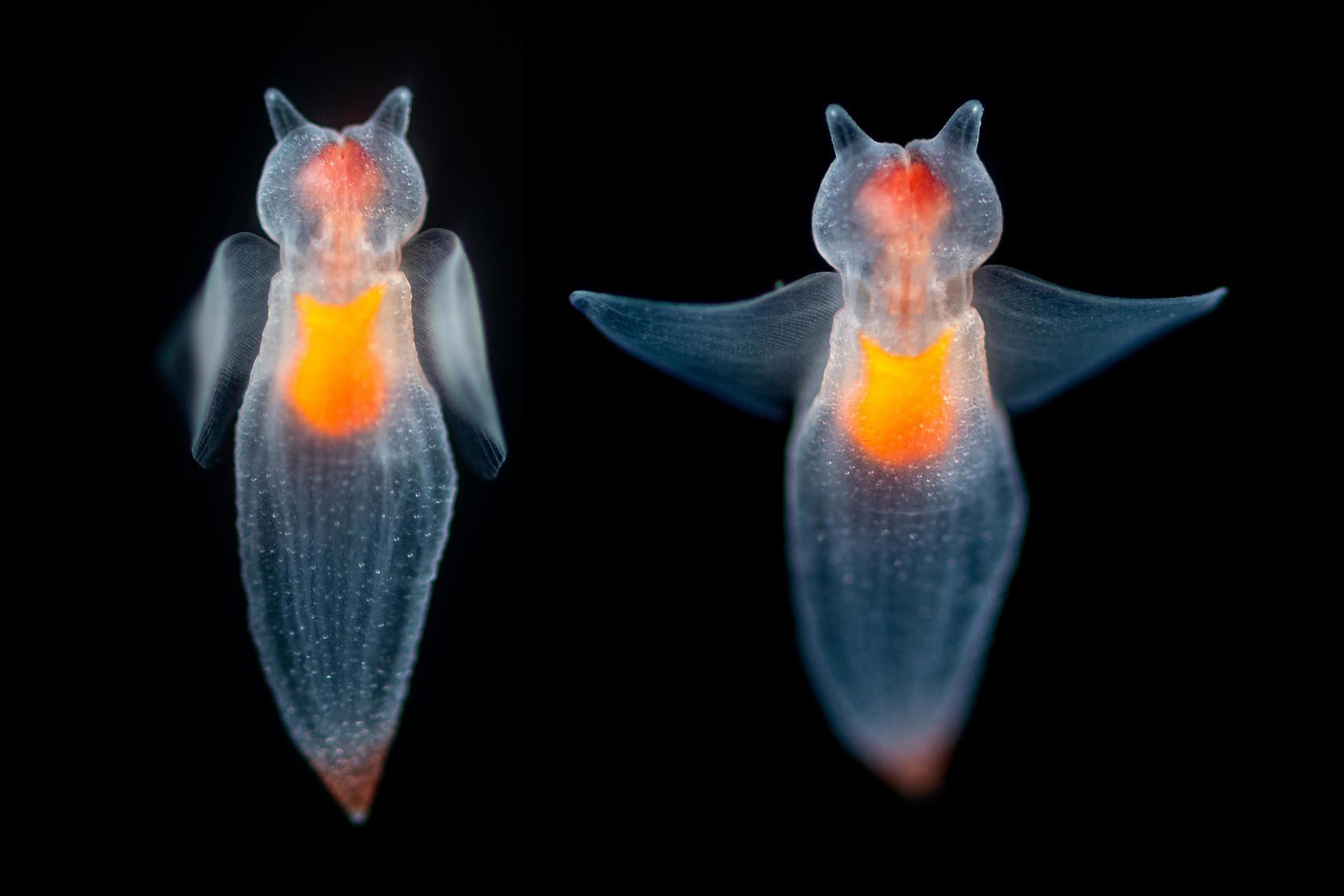
Divers in the Arctic Ocean have discovered a sea angel, a small creature with transparent wings and bright colors. This creature mainly hunts sea butterflies and has a unique way of hunting, showing the magic of plankton.
—
**8. “Headless Chicken” Creature**

A sea cucumber species called the “headless chicken monster” was filmed for the first time in the Southern Ocean near Antarctica. Using advanced filming equipment, researchers discovered this creature, contributing to the conservation of marine biodiversity.
—
**9. 26-foot-long pyrosome**

Off the coast of New Zealand, divers discovered a 26-foot-long creature that looked like a giant wind bag. This is a pyrosome, a rare giant plankton that often moves with ocean currents.
—
**10. 12,000-year-old skeleton in a cave**
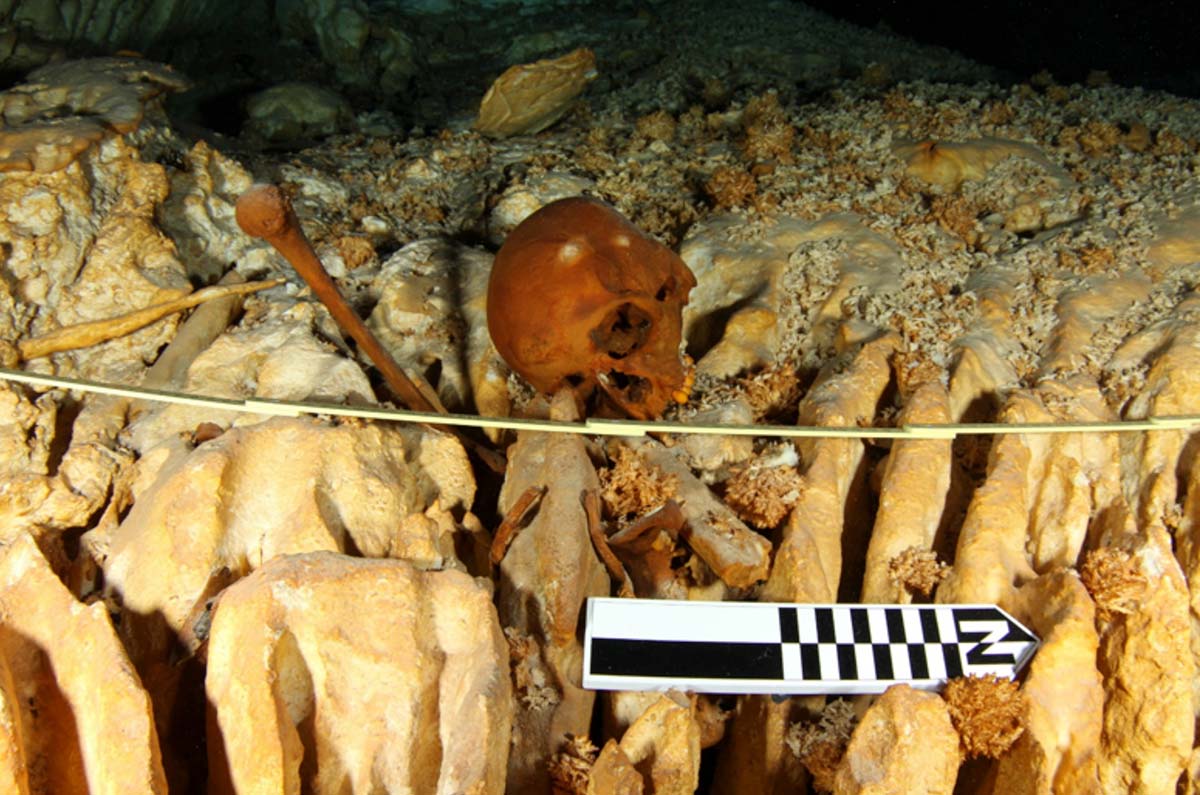
In Mexico, divers found the skeleton of a 15-16-year-old girl in the Hoyo Negro cave. The skeleton, named Nia, offers important clues about ancient Americans. The caves were dry during the Ice Age, but are now flooded by rising sea levels.
—
**11. The “Ghost Fleet” at Truk Lagoon**
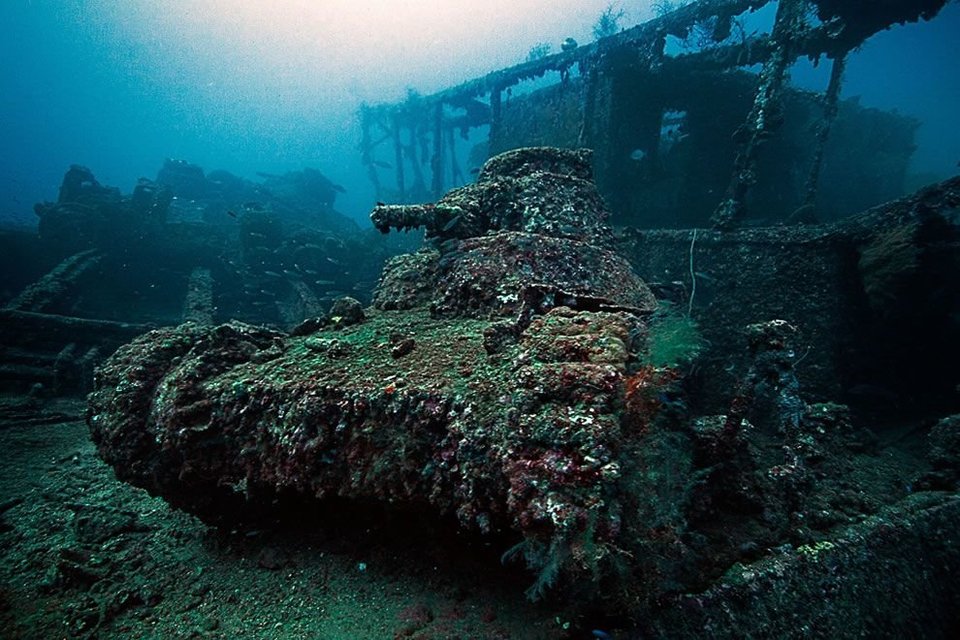
Truk Lagoon in Micronesia is where hundreds of Japanese planes and ships sank after a surprise attack by the US military in 1944. The wrecks of the ships and planes are still intact, making it one of the world’s largest wartime diving sites.
—
**12. The SS President Coolidge**
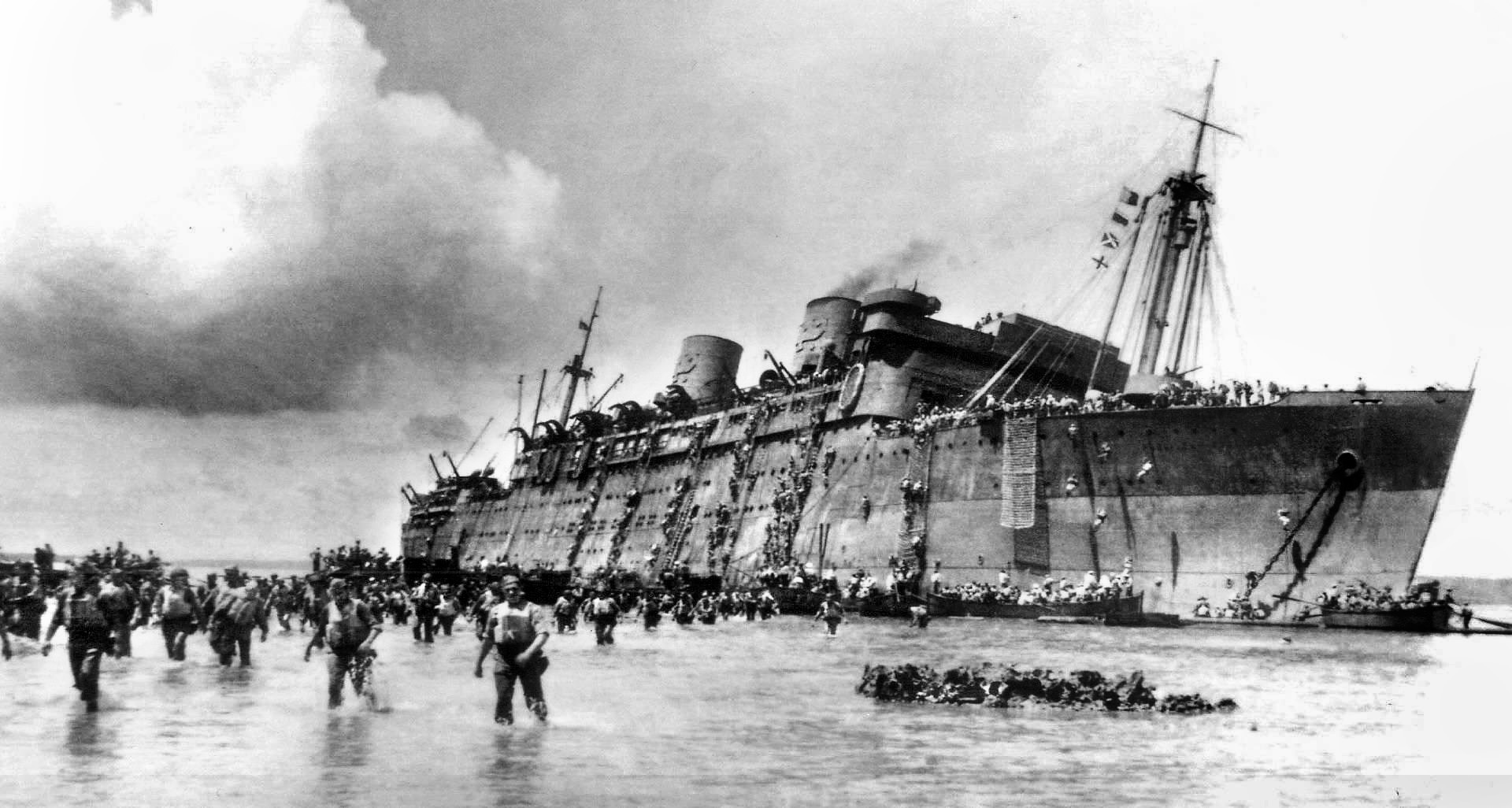
The luxury liner SS President Coolidge sank during World War II when it struck a mine near Espiritu Santo, and is now a popular diving site. It was the largest passenger ship in the United States when it was built, with a lavish interior and modern amenities.
—
**13. Cenote Angelita Cave**
In the Yucatan Peninsula, Mexico, the Cenote Angelita Cave contains a magical “underground river” due to the presence of hydrogen sulfide. This surreal sight attracts divers from all over the world.
Cenote Angelita (Underwater River):

The Cenote Angelita in Mexico is an extraordinary underwater phenomenon. This “underwater river” is formed due to the density difference between saline water and fresh water, with the saline water being heavier and settling at the bottom, creating distinct layers. The river can reach depths of over 100 meters. The surrounding trees appear to float near the riverbanks due to the dense water. The word “cenote” refers to freshwater-filled caves and is commonly used in Central America, where the Mayans historically used them for religious rituals, including human sacrifices.
Christ the Abyss Statue:
 Located in the Mediterranean Sea, the Christ the Abyss statue is a submerged bronze figure of Jesus Christ created by Italian sculptor Guido Gatti. It was placed underwater in 1954 in honor of Dario Gonzato, the first Italian to use scuba diving equipment. The statue features Christ with arms outstretched, offering a benediction of peace. In 2003 and 2014, the statue was taken out for repairs due to corrosion and damage from an anchor strike. There is also a second cast of the statue in St. George’s, Grenada, as a gift from the Navy of Genoa.
Located in the Mediterranean Sea, the Christ the Abyss statue is a submerged bronze figure of Jesus Christ created by Italian sculptor Guido Gatti. It was placed underwater in 1954 in honor of Dario Gonzato, the first Italian to use scuba diving equipment. The statue features Christ with arms outstretched, offering a benediction of peace. In 2003 and 2014, the statue was taken out for repairs due to corrosion and damage from an anchor strike. There is also a second cast of the statue in St. George’s, Grenada, as a gift from the Navy of Genoa.
MS Zenobia Ferry:

The MS Zenobia was a ferry built in Sweden that sank near Larnaca, Cyprus, in June 1980. The ferry overturned and sank with an estimated £200 million in cargo, but fortunately, there were no fatalities. It now lies on its port side at a depth of about 42 meters and is considered one of the top wreck diving sites in the world. There is a popular theory that the ferry might have been sabotaged by Mossad or MI6, but no evidence supports this. The wreck offers divers a variety of experiences, from simple dives to more challenging explorations of its car decks and engine room.
Giant Ice Isopod:
 A massive new species of isopod, a relative of the pillbug, was discovered in the deep sea off the coast of Indonesia. Named Bathynomus roii, this creature can grow to over 36 centimeters. Unlike most isopods, which feed on decaying organic matter, this species may target specific food sources. It also displays bioluminescence, possibly for camouflage or communication. This is an example of “deep-sea gigantism,” where creatures grow larger than their shallow-water counterparts due to the extreme conditions of the deep sea.
A massive new species of isopod, a relative of the pillbug, was discovered in the deep sea off the coast of Indonesia. Named Bathynomus roii, this creature can grow to over 36 centimeters. Unlike most isopods, which feed on decaying organic matter, this species may target specific food sources. It also displays bioluminescence, possibly for camouflage or communication. This is an example of “deep-sea gigantism,” where creatures grow larger than their shallow-water counterparts due to the extreme conditions of the deep sea.
Antikythera Mechanism:
 The Antikythera mechanism is a 2,000-year-old mechanical device found in a shipwreck off the Greek island of Antikythera. Initially thought to be just a collection of brass gears, closer inspection revealed that it was a sophisticated astronomical calculator designed to predict the positions of planets and stars. It had at least two dozen gears, and its complexity was unprecedented for its time. Archaeologist Derek J. de Solla Price in 1959 identified its function as a model of the solar system, and it’s now considered an ancient form of computer or calendar.
The Antikythera mechanism is a 2,000-year-old mechanical device found in a shipwreck off the Greek island of Antikythera. Initially thought to be just a collection of brass gears, closer inspection revealed that it was a sophisticated astronomical calculator designed to predict the positions of planets and stars. It had at least two dozen gears, and its complexity was unprecedented for its time. Archaeologist Derek J. de Solla Price in 1959 identified its function as a model of the solar system, and it’s now considered an ancient form of computer or calendar.
Heracleion (Lost City):

The ancient Egyptian city of Heracleion, once a bustling port, was submerged in the sea for over 2,000 years. Discovered in 2000 by French archaeologist Franck Goddio, the city’s ruins include 64 ships, 700 anchors, gold coins, giant statues, and the remains of temples. Heracleion was once an important trading hub where all traffic into Egypt was regulated. The city had canals, similar to Venice, and its buildings and artifacts were exceptionally well-preserved. Its submersion is still a mystery.
Apollo Rocket Engines:
 Jeff Bezos’ team, through their company Blue Origin, recovered the F1 rocket engines that helped propel the Apollo 11 mission to the Moon in 1969. The engines were found 14,000 feet underwater off the coast of Florida in 2013. Using advanced technology, including remotely operated vehicles (ROVs), they carefully retrieved the engines. Despite the challenges of extreme pressure and limited visibility, the operation was successful. The engines will be displayed in a museum in Seattle, showing the corrosion and wear from their time on the ocean floor after falling from the Saturn V rocket.
Jeff Bezos’ team, through their company Blue Origin, recovered the F1 rocket engines that helped propel the Apollo 11 mission to the Moon in 1969. The engines were found 14,000 feet underwater off the coast of Florida in 2013. Using advanced technology, including remotely operated vehicles (ROVs), they carefully retrieved the engines. Despite the challenges of extreme pressure and limited visibility, the operation was successful. The engines will be displayed in a museum in Seattle, showing the corrosion and wear from their time on the ocean floor after falling from the Saturn V rocket.
Christmas Tree Worm:
 The Christmas tree worm is a small, beautiful marine creature found on coral reefs, especially around the Great Barrier Reef. Its crown resembles a miniature Christmas tree, which comes in a variety of bright colors. The worm’s crown is used to filter feed by capturing plankton and tiny particles. When threatened, the worm can quickly retract into its protective calcium carbonate tube. The worm plays a crucial role in coral health by contributing to the reef’s ecosystem through its feeding habits.
The Christmas tree worm is a small, beautiful marine creature found on coral reefs, especially around the Great Barrier Reef. Its crown resembles a miniature Christmas tree, which comes in a variety of bright colors. The worm’s crown is used to filter feed by capturing plankton and tiny particles. When threatened, the worm can quickly retract into its protective calcium carbonate tube. The worm plays a crucial role in coral health by contributing to the reef’s ecosystem through its feeding habits.
Titanic Wreck:
 The wreck of the Titanic, which sank in 1912, was found 12,000 feet underwater in 1985, about 370 miles off the coast of Newfoundland. The ship had torn apart before sinking, with the bow and stern sections lying about a third of a mile apart. The wreck was located in Titanic Canyon, a deep-sea trench. The bow is the best-preserved part of the wreck, while the stern is severely damaged. Since its discovery, the Titanic wreck has been visited by explorers, filmmakers, and tourists, and thousands of artifacts have been recovered for public display.
The wreck of the Titanic, which sank in 1912, was found 12,000 feet underwater in 1985, about 370 miles off the coast of Newfoundland. The ship had torn apart before sinking, with the bow and stern sections lying about a third of a mile apart. The wreck was located in Titanic Canyon, a deep-sea trench. The bow is the best-preserved part of the wreck, while the stern is severely damaged. Since its discovery, the Titanic wreck has been visited by explorers, filmmakers, and tourists, and thousands of artifacts have been recovered for public display.





